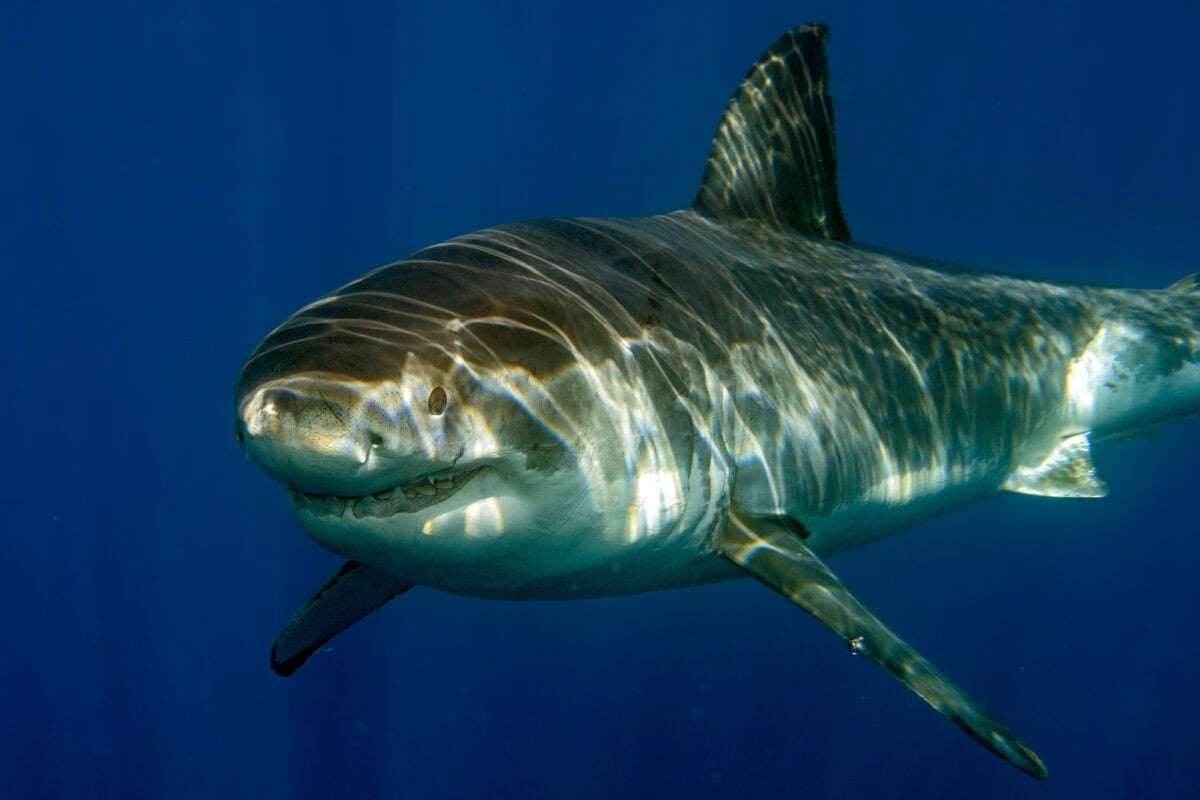The great white shark, known scientifically as Carcharodon carcharias, is one of the ocean’s most formidable predators, capturing the fascination and fear of many. This apex predator is most renowned for its sheer size and power, making any encounter with it an unforgettable experience. Among these encounters, one particular instance stands out: the sighting of the largest great white ever recorded in U.S. waters. This remarkable event not only captivated marine enthusiasts but also provided valuable insights into the lives of these majestic creatures.

 Great White Shark. Adult Breaching. Image via Depositphotos.
Great White Shark. Adult Breaching. Image via Depositphotos.The coastal waters of the United States have long been home to great white sharks, which play a vital role in the marine ecosystem as top predators. Historically, these sharks have been both feared and revered. As human understanding of marine life has advanced, efforts have been made to better understand and protect these powerful creatures. The great white’s presence in U.S. waters is an indicator of a healthy ocean environment, highlighting the need for continued conservation efforts.


In 2019, a massive great white shark known as “Deep Blue” was spotted off the coast of Hawaii. Although not within the continental U.S., this sighting was significant, as it marked one of the largest great whites ever documented in proximity to American waters. Estimated to be over 20 feet long and weighing around 2.5 tons, Deep Blue became an icon for shark enthusiasts and researchers alike.


The great white shark is easily identifiable by its bullet-shaped body, conical snout, and serrated triangular teeth. These features make it an efficient hunter, capable of taking down prey much larger than itself. Typically gray on top and white underneath, this coloration provides camouflage in the water, allowing them to ambush prey with stealth and precision.


Great whites are known for their varied diet, which includes fish, seals, sea lions, and carrion. They have an extraordinary sense of smell, which aids in locating prey from miles away. Known for their breaching behavior, great whites often attack with a powerful upward thrust, surprising their prey from below. This robust hunting strategy is vital for their survival in the competitive ocean environment.


As apex predators, great white sharks play a crucial role in maintaining marine biodiversity. By controlling the population of other marine animals, they help balance the ecosystem, ensuring the health of the ocean. Their presence is vital for a balanced and thriving marine environment, making their conservation essential for ecological stability.


Despite their fearsome reputation, great white sharks face numerous threats, primarily from human activities such as fishing and environmental degradation. Conservation efforts are ongoing, with organizations working to protect shark habitats and reduce accidental catches in fishing gear. Public education campaigns also aim to change perceptions about sharks, highlighting their importance to marine ecosystems.


Advancements in technology have significantly enhanced our ability to track and study great white sharks. Utilizing satellite tags and drones, researchers can monitor the movements and behaviors of these predators in unprecedented detail. This data provides insights into migratory patterns, breeding grounds, and feeding habits, which are essential for effective conservation strategies.


Great white sharks have long captured the public’s imagination, fueled by media portrayals in films like “Jaws.” Today, interest continues through documentaries and dedicated research programs that both educate and entertain. Public fascination often contributes to research funding and conservation support, demonstrating the positive impact of widespread interest in these majestic predators.


Public awareness and education play a crucial role in the conservation of great white sharks. By understanding the ecological significance and the threats these animals face, people are more likely to support protective measures. Awareness campaigns and shark tourism can help promote a positive image of these creatures, emphasizing their role in the ocean’s health.


The sighting of such large great whites in U.S. waters has profound implications for marine biology. It underscores the importance of preserving marine habitats and the need for continued research. Each finding offers a glimpse into the largely unknown world of the ocean, highlighting the complexity and interconnectedness of marine life.


The sighting of the largest great white ever recorded in U.S. waters is a testament to the power and mystery of the ocean. It serves as a reminder of the wonders yet to be discovered beneath the waves and the importance of safeguarding these incredible creatures. As science continues to unravel the secrets of the deep, each discovery brings us closer to a harmonious coexistence with the ocean’s most fearsome yet fascinating inhabitants.
Latest posts by Esther Evangeline, MSc Zoology (see all)
